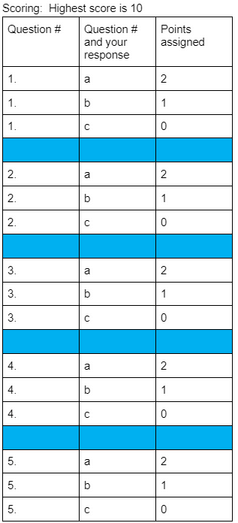By
Rose Polchin
|
Date Published: September 07, 2021 - Last Updated August 29, 2021
|
Comments
 Do you have the right number of agents to meet your service level and response time objectives?
Do you have the right number of agents to meet your service level and response time objectives?
ICMI’s definition of contact center management is: “The art of having the right number of properly skilled people and supporting resources in place at the right times to handle an accurately forecasted workload, at service level and with quality.”
In our last column in this series, we learned about the art of contact center forecasting. Once we have a solid forecast, we need to determine the staff we need to handle that demand at the desired service level and response time objectives. Frontline labor costs account for approximately 65 percent to 75 percent of a contact center’s operating cost, so getting this step right is not only essential to meeting our service levels, it is also essential to managing cost and budget objectives.
In this post, we want to provide you with a set of questions designed to help identify potential strengths and areas of opportunity in your current staffing processes so you can ensure your center’s staffing process is enabling exceptional customer and employee experiences in the most cost-effective manner.
Staffing process assessment:
Below is a five-question “quiz” designed to assist you in assessing your current staffing processes. While certainly not comprehensive, these 5 questions can help you understand where your staffing processes are today and hopefully jumpstart a deeper dive.
Ask yourself the following about your current staffing process(es):
1. Does your contact center know how many FTEs (full time equivalents) are required to meet your objectives?
a. Yes, we have agreed-upon service level and response time objectives for all contact channels, and have accurate workload forecasts for each.
b. Yes, we have agreed-upon service level and response time objectives for all contact channels, but don’t have accurate workload forecasts for all of them.
c. No, we don’t have agreed-upon service level and response time objectives for all contact channels, and we don’t have accurate workload forecasts for all of them.
2. Are you confident you are using the appropriate formula to calculate base staff for each contact channel (i.e. Erlang C; Response time; Computer simulation)?
a. Yes, we have assessed the channel mix we offer, and we are 85 percent to 100 percent confident we are utilizing the appropriate calculations for staffing them.
b. We have a staffing process in place, and we are confident we are utilizing the appropriate staffing for some channels, but not for all channels.
c. No, we don’t have a staffing process in place for all contact channels, and/or we aren’t confident we are using the correct calculations for staffing them.
3. Do you consistently review your agent group design to determine if it is to simple or too complex?
a. Yes, we understand that large agent groups are more efficient than smaller ones, and consistently look for opportunities to make appropriate changes to take advantage of economies of scale in all the channels we support.
b. Yes, we understand that large agent groups are more efficient than smaller ones, and often look for opportunities to make appropriate changes to take advantage of economies of scale in the inbound phone channel, but not for all the channels we support.
c. No, we don’t consistently look for opportunities to make appropriate changes to take advantage of economies of scale in all the channels we support.
4. Do you get the budget and support you need to staff your center to meet service level and response time?
a. Yes, organization executives understand the value the contact center contributes to customer and employee experience, retention, process improvements, and competitive differentiation.
b. Sometimes. While some organization executives understand the value the contact center contributes to customer and employee experience, retention, process improvements, and competitive differentiation, there is still a belief that staffing can always be reduced by adding more self-service options.
c. No. We are given our budget and staffing levels and need to work with what we have.
5. Are you ensuring you add the appropriate amount of shrinkage to your base staff requirements?
a. Yes, we have reliable data that allows us to accurately account for shrinkage** (all the time that agents are being paid, but are not available to handle contacts), and factor that into our final staffing requirements. We also adjust shrinkage to reflect the time frame (annual, season< daily, interval) when calculating staffing numbers.
b. Yes, we have reliable data that allows us to accurately account for shrinkage** (all the time that agents are being paid but are not available to handle contacts), and factor that into our final staffing requirements. However, we use the same overall shrinkage percentage regardless of time frame.
c. No, we don’t have reliable data that allows us to accurately account for shrinkage. We either don’t add a shrinkage percentage into our staffing requirements, or we add an overall shrinkage percentage that we are not sure is correct.

Score interpretation:
7 - 10: Shipshape staffing
You have solid staffing processes. Your contact center understands that different contact channels may need different staffing calculations and the importance of regularly assessing agent group design; applies the appropriate shrinkage to base staffing; and consistently looks for opportunities to improve staffing models.
While most of the organization understands the value of the contact center and the tradeoffs involved in staffing, budgets, and customer and employee experience, there is an opportunity to continue to look for ways to improve how you communicate and refine your staffing models.
4 - 6: Heading in the right direction
You have staffing processes that deliver variable results. While the contact center understands that different contact channels may need different staffing calculations, the importance of regularly assessing agent group design; applying the appropriate shrinkage to base staffing and looking for opportunities to improve staffing models, this is not done consistently or sometimes at all.
Some of the organization understands the value of the contact center and the tradeoffs involved in staffing, budgets and customer and employee experience, but it is sometimes difficult to get the support and budget you need.
0 - 3: In need of a course correction
Staffing processes and models need to be developed and implemented. Currently, getting the right number of agents to deliver consistent customer and employee experiences is not a reality. You have a set number of agents, and results are variable. Budgets are not based on workload requirements and the contact center is seen as a “cost of doing business” vs. as a valuable asset.
The bottom line is that every contact center needs solid staffing processes that ensure we have the right number of agents to meet our service level and response time objectives and deliver high-quality customer and employee experiences in the most cost effective manner.
*Labor costs will vary widely due to several factors from geography, labor availability, etc.
**Base staff: Also called seated agents. The minimum number of agents required to achieve service level and response time objectives for a given period of time.h="523&w=238'" style="float: right; margin: 2px;" />
**Shrinkage: Includes all activities that take an agent away from being available to handle contacts, including vacation, breaks, training, and other variables.